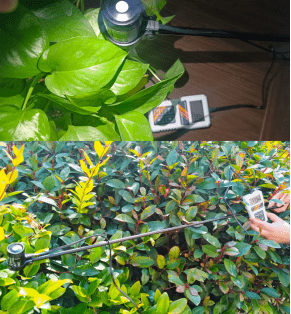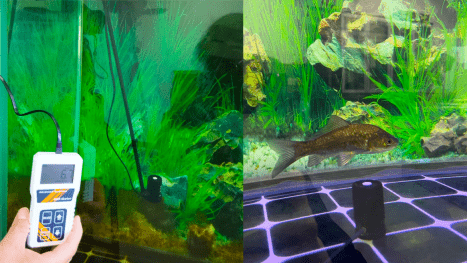Recently, I got a new waterproof PAR meter. After using it for a while, I've had an excellent experience! It can quickly and accurately measure the light intensity, and the data is easy to read. Its operation is very simple, so even beginners can easily get the hang of it. Moreover, it is small, lightweight, and convenient to carry. Whether it's used for light monitoring outdoors or in aquarium and reef tank environment, there's no hassle at all. I truly feel that I made the right purchase!

Its instruction manual states that it can measure PAR (Photosynthetically Active Radiation) flux in wavelengths ranging from 400 to 700 nm for both sunlight and LED light.

Comparing the light-measurement results of this PAR meter with those of another well-known brand's PAR meter I have,there is a difference of about 20-30 PPFD when measuring outdoors , but a difference of ±4 - 6% can be regarded as within the error range.Since the positions of the sensors are different during measurement, there will be slight differences in the amount of light picked up. In this sense, it can also be said to be within the error range.
Its price is affordable for most people. It cost 140 dollars.The results are displayed with decimal points, and it has a hold function, an average value display, a calibration function, and is powered by 2 readily available AAA batteries.
Most importantly, it is equipped with a waterproof probe! It also comes with a retractable adjustment rod, which can be used to detect underwater or at a distance.

This PAR meter has almost no flaws!
I hope this information is helpful to you.

Its instruction manual states that it can measure PAR (Photosynthetically Active Radiation) flux in wavelengths ranging from 400 to 700 nm for both sunlight and LED light.

Comparing the light-measurement results of this PAR meter with those of another well-known brand's PAR meter I have,there is a difference of about 20-30 PPFD when measuring outdoors , but a difference of ±4 - 6% can be regarded as within the error range.Since the positions of the sensors are different during measurement, there will be slight differences in the amount of light picked up. In this sense, it can also be said to be within the error range.
Its price is affordable for most people. It cost 140 dollars.The results are displayed with decimal points, and it has a hold function, an average value display, a calibration function, and is powered by 2 readily available AAA batteries.
Most importantly, it is equipped with a waterproof probe! It also comes with a retractable adjustment rod, which can be used to detect underwater or at a distance.

This PAR meter has almost no flaws!
I hope this information is helpful to you.





